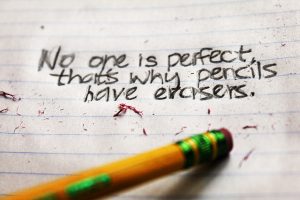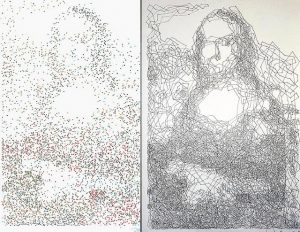Prewriting: Organizing and Outlining
28 Organizing Your Ideas and Looking for Connections

Once you’ve gotten familiar with your assignment, considered your audience, and completed some pre-writing work, it’s time to start connecting ideas and seeing how they fit together to create a coherent and unified assignment.
Once you have generated a good range of ideas, your next step will be to look through the ideas you’ve come up with. Which ones are most interesting to you to research and write about? You will, ideally, find several topics in your idea generation process that are interesting to you and robust enough that you will be able to clearly support them (and potentially also locate strong sources to help you do that).
So, how do you figure out which, out of all these good ideas you’ve come up with, is THE idea you want to work with?
Looking for Connections

Once you have narrowed your ideas to ones that fit the assignment parameters, look for connections between the remaining ideas. Does one support another? Are a few of them different ways of looking at the same thing? Can two combine to make a stronger, more complete topic? Does one spark your interest in a way the others don’t?
If you complete these steps and find you have no topics left that have passed these tests, you will want to generate new ideas, maybe with a different generation method.
If you are still looking at several potential topics after this process, pick just one of them, or one tightly-connected group of them, to work with for your assignment.
Rough Outline
A rough outline is less formal than a traditional outline. Working from a list, a brainstorm, or a freewrite, organize the ideas into the order that makes sense to you. You might try colour-coding like items and then grouping the items with the same colour together. Another method is to print your prewriting, then cut it up into smaller pieces, and finally put the pieces into piles of related items. Tape the like items together, then put the pieces together into a whole list/outline.
Text Attributions
- This chapter was adapted from “Organizing Your Ideas and Looking for Connections” in The Word on College Reading and Writing by Carol Burnell, Jaime Wood, Monique Babin, Susan Pesznecker, and Nicole Rosevear, which is licensed under a CC BY-NC 4.0 Licence. Adapted by Allison Kilgannon.
Media Attributions
- “No one is perfect” by becca.peterson26 is licensed under CC BY-ND 2.0 Licence.
- Mona Lisa Connect the Dots by Thomas Pravitte, photo by James Robert Smith is licensed under a CC BY NC-SA 2.0 Licence.

